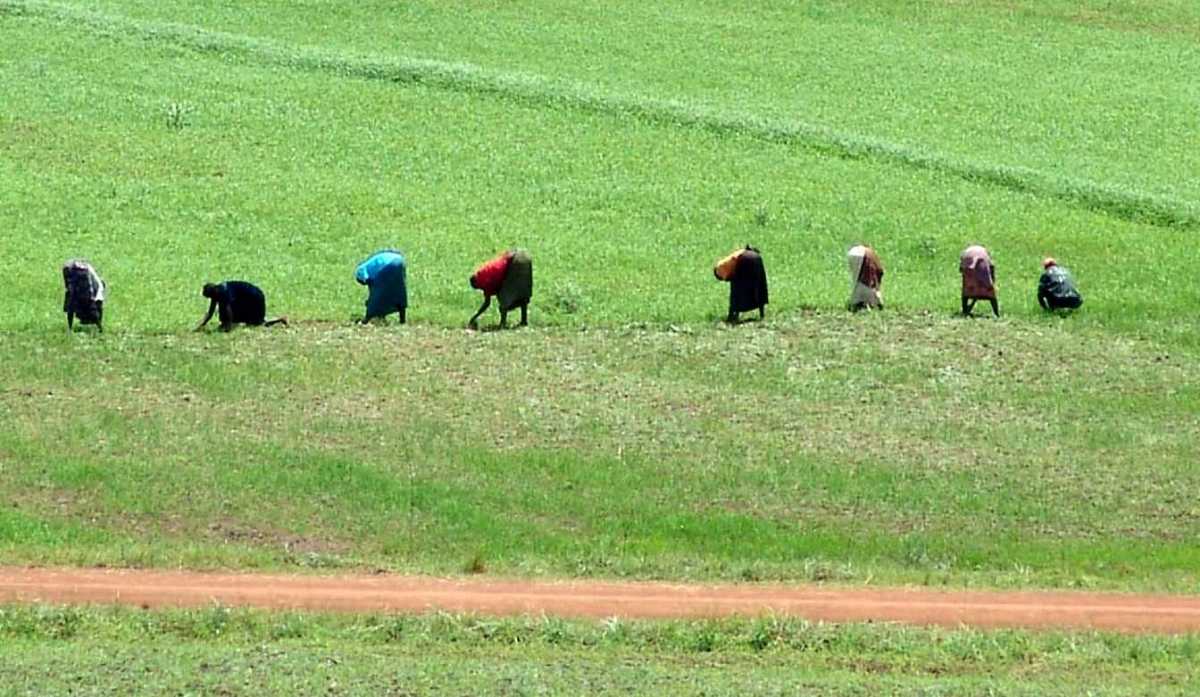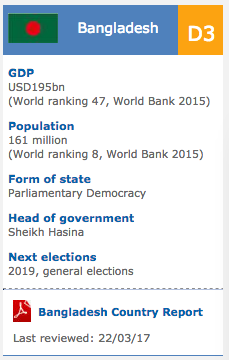Uganda: Uganda Agriculture Profile
2015/01/28
Agriculture is known to be the major contributor to national economic growth, poverty reduction, food security and exporter and has led to improvement of people’s livelihoods and the socio-economic transformation of the country. It is the largest sector in Uganda employing 80% of the workforce and it contributed 23.9 % to the real GDP in 2012.
Regulatory Framework
Ministry of Agriculture, Animal Husbandry and Fisheries
The ministry is responsible for formulating, reviewing and implementing national policies, plans, strategies, regulations and standards and enforces laws, regulations and standards along the value chain of crops, livestock and fisheries.
Functions of the sector
- Control and manage epidemics and disasters, and support the control of sporadic and endemic diseases, pests and vectors.
- Regulate the use of agricultural chemicals, veterinary drugs and biological, planting and stocking materials as well as other inputs.
- Support the development of infrastructure and use of water for agricultural production along livestock, crop and fisheries value chains.
- Establish sustainable systems to collect, process, maintain and disseminate agricultural statistics and information.
- Monitor, inspect, evaluate and harmonize activities in the agricultural sector including local governments.
- Strengthen human and institutional capacity and mobilize financial and technical resources for delivery of agricultural services.
- Develop and promote collaborative mechanisms nationally, regionally and internationally on issues pertaining to the sector.
National Agriculture Policy
The policy provides guidance to all actors in the agricultural sector to make investments that will increase agricultural incomes, reduce poverty, improved household food and nutrition security, create employment and stimulate overall economic growth.
National Agricultural Advisory Services (NAADS)
The mandate of NAADS is to contribute to the modernisation of the agricultural sector in order to increase total factor productivity of both the land and labour for the benefit of the farmers. Its objectives and functions are to:
- Promote food security, nutrition and household incomes though increased productivity and market oriented farming;
-
Empower farmers to access and utilise contracted agricultural advisory services;
Develop private sector agricultural advisory delivery capacity and systems and assure quality of advice.
Functions of the National Agricultural Research Organisation are to:
- Provide strategic direction for publicly funded agricultural research in Uganda and act as a forum for agricultural researchers in Uganda
- Coordinate and oversee, in collaboration with the Uganda National Council for Science and Technology and other lead agencies, the development, consolidation and implementation of agricultural research policy
- Set national priorities and harmonize agricultural research activities of the national agricultural research system, constituent institutions and public agricultural research institutes, civil society organisation and private sectors
- Advise and coordinate formulation of policy and legislative proposals, research standards, codes of ethics, conduct and practice and guidelines for delivery of agricultural research services
- Provide guidelines, guidance and ensure delivery of quality agricultural research by agricultural research service providers;
Uganda Coffee Development Authority (UCDA)
UCDA was established by statutory mandate in 1991 following the liberalization of the coffee industry to promote and oversee the deployment of the entire coffee subsector through support to research, propagation of clean planting materials, quality assurance, value addition and timely provision of market information to stakeholders
Dairy Development Authority (DDA)
DDA is to provide proper coordination and efficient implementation of all government policies which are designed to achieve and maintain self-sufficiency in the production of milk in Uganda by promoting production and competition in the dairy industry and monitoring the market for milk and dairy products.
Its functions are to:
- Raise incomes and standards of living of small scale dairy farmers
- Achieve and maintain self-sufficiency in milk and dairy products
- Promote increased dairy productivity using cost-effective technology and breeding policy
- Establish liberal but harmonised dairy markets
- Regulate and control the market for milk and dairy products
- Improve human resources capacity for the development of the dairy sector
Cotton Development Authority
The Cotton Development Authority (CODA) is a regulatory state corporation under the Ministry of Agriculture established under section 4 of the Cotton (Amendment) Act 2006. The role of the Authority is to promote, coordinate, monitor, regulate and direct the cotton industry.
Agriculture is known to be the major contributor to national economic growth, poverty reduction, food security and exporter and has led to improvement of people’s livelihoods and the socio-economic transformation of the country. It is the largest sector in Uganda and it contributed 23.9% to the real GDP in 2012.
Rainfall
Uganda’s rainfall ranges between 500mm to 2500 mm and the rainfall regime allows two planting and harvesting seasons a year in most parts of the country, without the use of irrigation.
Crops Grown in Uganda
Uganda’s key agricultural crops include coffee, cotton, tobacco, tea, beans, cassava and sweet potatoes, finger millet, ground nuts, sorghum, banana, Irish potatoes, rice and simsim among others.
Soils
About 65% of Ugandan soil is suitable for agriculture and the fertility of Uganda soil is summarized as follows:
Soils Percentage of land
Soils of high productivity 8%
Soils of medium productivity 14%
Soils of fair productivity 43%
Soils of low productivity 30%
Soils of negligible productivity 5%
Coffee Sector
Coffee is one of the most important cash crops in Uganda playing a major role in the livelihoods of many people in the country. In Uganda about 500,000 households depend on coffee production and the country has main two coffees grown that are Arabica which accounts for 15% and Robusta coffee which accounts for 85%.
Cotton Sector
Uganda has one of the best climates in Africa that is moderate with cool temperature that favours growth of cotton. Cotton was introduced in Uganda in 1903 and it is mainly cultivated in areas of altitude ranging between 3500 feet to 4000 feet.
Livestock Sector
Livestock is one of the Uganda’s important growth sectors contributing about US$ 290 million to the GDP. The sector is characterized into cattle, goats, pigs, sheep and poultry. 71% of Ugandan’s household are engaged in livestock rearing
Investment opportunities in Agriculture Sector
- Cotton ginning with cotton seed oil, animal feed and absorbent cotton production
- Cotton yarn spinning
- Cotton ginning with absorbent cotton wool production
- Construction of modern abattoirs to enable meat production and processing
- Production of animal drugs for the treatment of animals
- Animal feeds processing
- Tanning of hides and skins
- Extensive ranching
- Beef ranching
- Abattoirs for pigs
- Coffee processing
Challenges faced by the agriculture sector
The key challenges include the following:
Favourable prospects for the 2014 second season crop production in bi-modal areas
Unfavourable crop prospects in eastern uni-modal Karamoja region
Very good pasture conditions in the cattle corridor
Maize prices continue to seasonally decline
Pockets of acute food insecurity in Karamoja region calls for sustained humanitarian assistance



- High cost of investment/finance.
- Inadequate physical infrastructure to support the sector
- Poor farming techniques
- Limited access to quality farm inputs
- Too much relying on rain;
- Lack of marketing data and information
- Inadequate production and post harvest technologies.
- Inadequate disease control facilities.
- Lack of awareness by farmers on better farming methods
- Low incomes of farmers to purchase the necessary farm inputs
- Limited funding by government and private sector to agricultural sector
- Low production and productivity resulting in low revenue
- Low value addition to agricultural produce
- Limited market access due to inadequate marketing and agro processing facilities
- Weak implementation of agricultural laws and policies
- Limited public agricultural institutions
- Inadequate storage and high post harvest losses
- Land limitation in some areas
-
The country has not yet been zoned on the basis of different agricultural crops.
- In bi-modal rainfall areas, production of second season crops is estimated at average level
- Below-average crop production expected in Karamoja region
- Maize prices continue to seasonally decline in most markets
-
Food security concerns persist in parts of Karamoja region
- Uganda News
-
- BOTSWANA: Africa: USA-Africa - No Policy? Bad Policy? or Both?
- BOTSWANA: Africa: U.S. State Department To Get Experienced Diplomat in Key Africa Post
- UGANDA: Ugandan Govt Starts Verifying International Academy Teachers
- BOTSWANA: Africa’s economic growth in 2016 was driven by East Africa
- BOTSWANA: Africa property offers rich pickings for the brave
- BOTSWANA: Bill Gates sees US likely to maintain aid levels for Africa
- Trending Articles
-
- HUNGARY: Putin, Hungarian PM discuss new nuclear power plant
- CHINA: Xi Jinping opens BRICS Summit in Xiamen, asks members to shelve differences
- CHINA: Xiamen BRICS summit in China
- CHINA: The Mixed Fortunes of the BRICS Countries, in 5 Facts
- CHINA: BRICS Must Trust Diplomacy To Resolve Issues, Says China's Xi Jinping
- BOTSWANA: Africa: U.S. State Department To Get Experienced Diplomat in Key Africa Post










